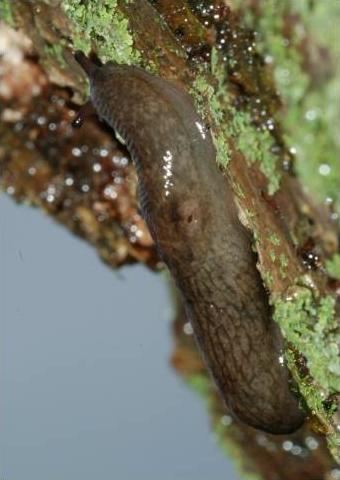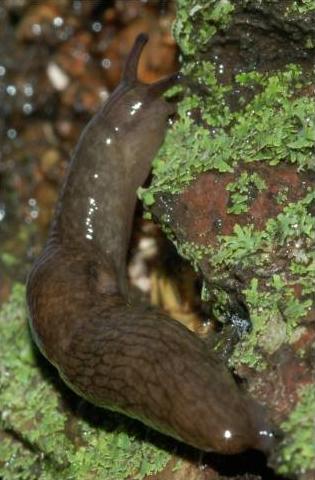|
|
Records for slugs in general are pretty limited, although this slug seems
to be found pretty much in all of the eastern United States, according to
the range maps provided by Hubricht.
This slug is also known as Deroceras gracile and Limax
laevis along with a number of other scientific names.
It seems that there are two similar slugs found in Iowa, the native D.
laeve and the non-native D. reticulatum. Keys
differentiate between the two on the basis of color--laeve being black and
reticulatum gray, reticulatum having a white area around the
breathing pore, and reticulatum having a milky mucus. Reticulatum
is also larger than laeve.
I saw no milky mucus and the slug was only about an inch long so I
think it was laeve.
|

|
|
|
|
There is a lot of work that needs to be done with slugs,
even at the most fundamental taxonomic level. Shells of snails are
easily preserved, but slugs have greatly reduced internal shells.
Slugs have been collected much less frequently than snails and have
often been poorly preserved.
Still, they are fairly charming creatures.
|

|